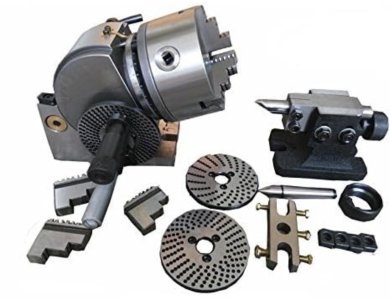
Kijiji - Buy, Sell & Save with Canada's #1 Local Classifieds
Visit Kijiji Classifieds to buy, sell, or trade almost anything! New and used items, cars, real estate, jobs, services, vacation rentals and more virtually anywhere.

Yup, looks like a "Brown and Sharp " made by Vertex to me...The ad should say "Brown and Sharp type". I don't believe it a real B&S
Yup, looks like a "Brown and Sharp " made by Vertex to me...
Great response! Thx, Dabbler. That clarifies much.great question.
what makes a dividing head "Universal" v. "Semi-universal"? Is it the external drive input?

This is an example of such a setup:As to how that relates to dividing heads and RT is that much of the equipment was marked in degrees and was capable was working as dividing and or rotating while being on movable slide ways. Compounds upon compounds etc.
A universal DH allows for differential dividing. All others (semi universal, direct) do not.
Yes, for differential dividing it needs the external gearing to “back feed” the “difference“ by either advancing or retarding the reference point into the dividing plate.
